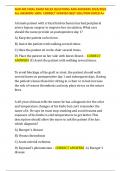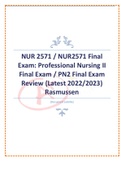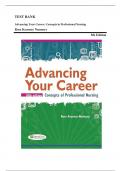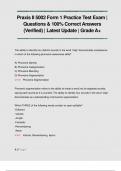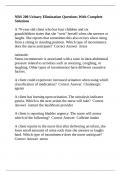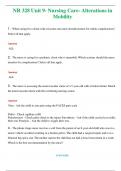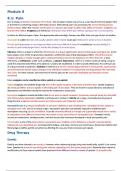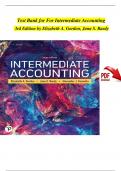Exam (elaborations)
NUR 402 FINAL EXAM NCLEX QUESTIONS AND ANSWERS 2024/2025 ALL ANSWERS 100% CORRECT VERIFIED BEST SOLUTION RATED A+
- Course
- Institution
NUR 402 FINAL EXAM NCLEX QUESTIONS AND ANSWERS 2024/2025 ALL ANSWERS 100% CORRECT VERIFIED BEST SOLUTION RATED A+
[Show more]
